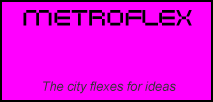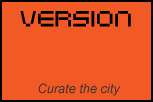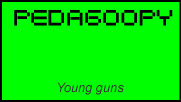PSYCHEDELIC MANILA
I propose Avenida to become the catalyst for a psychedelic aesthetic. But to realize it, it must come back to its better state, a pedestrianized strip. How valuable the architecture is in Avenida? Not only Avenida was the entertainment mecca of the city, where an
 imated neon signages enlivened the streetscape, building design along this street is ideal for our tropical setting. The arcaded or covered sidewalks made strolling in the city comfortable. When FM Atienza embarked on a renewal project for this street, the vehicular traffic was rerouted elsewhere, and the buildings along Avenida became the centerpiece. Now that traffic is back, stress is reintroduced. People won’t have the time to pause for a moment to appreciate their surroundings. Ignorant people can now sneakily demolish another valuable building along Avenida without us noticing it. The claim that the pedestrianized Avenida invited prostitution is hard to believe, because it has always been there even before it was redeveloped. Now that it is back to its old chaotic state, authorities will have a hard time policing the areas because of so many obstructions, as compared to having just an open space and people. If we are to revive this street and able to convince Mayor Lim to consider the value of the street, as a place rather than as a road, Avenida can be a starting point for the psychedelic movement. In my correspondence with P.Laurel, the proponent behind the Manila Center for the Arts, she expressed her wish to have a streetscape as colorful as the street scene in Salvador de Bahia, Brazil (The photo I posted under “A Call for a Psychedelic Manila”). The objective is to have a similar approach to the street but produce an output that is more “Pinoy.” I have seen heritage buildings abroad revived in newer or fresher colors, it is a wish that we see the same thing done to ours. But what if, we dress up our buildings the same way we dress up our jeepneys, tricycles or calesas? If you compare the jeepney with a car, the jeepney will appear gaudy and sometimes we even call it “baduy.” But not if we let this “baduy” aesthetic engulf our streetscape. Of course, the Manila Street Gallery will take part while the buildings host expressions of Filipino creativity. Imagine slogans, street language, caricatures, and comic illustrations painted on the walls of Avenida buildings. One building can even have many colors and revive its neon signages.
imated neon signages enlivened the streetscape, building design along this street is ideal for our tropical setting. The arcaded or covered sidewalks made strolling in the city comfortable. When FM Atienza embarked on a renewal project for this street, the vehicular traffic was rerouted elsewhere, and the buildings along Avenida became the centerpiece. Now that traffic is back, stress is reintroduced. People won’t have the time to pause for a moment to appreciate their surroundings. Ignorant people can now sneakily demolish another valuable building along Avenida without us noticing it. The claim that the pedestrianized Avenida invited prostitution is hard to believe, because it has always been there even before it was redeveloped. Now that it is back to its old chaotic state, authorities will have a hard time policing the areas because of so many obstructions, as compared to having just an open space and people. If we are to revive this street and able to convince Mayor Lim to consider the value of the street, as a place rather than as a road, Avenida can be a starting point for the psychedelic movement. In my correspondence with P.Laurel, the proponent behind the Manila Center for the Arts, she expressed her wish to have a streetscape as colorful as the street scene in Salvador de Bahia, Brazil (The photo I posted under “A Call for a Psychedelic Manila”). The objective is to have a similar approach to the street but produce an output that is more “Pinoy.” I have seen heritage buildings abroad revived in newer or fresher colors, it is a wish that we see the same thing done to ours. But what if, we dress up our buildings the same way we dress up our jeepneys, tricycles or calesas? If you compare the jeepney with a car, the jeepney will appear gaudy and sometimes we even call it “baduy.” But not if we let this “baduy” aesthetic engulf our streetscape. Of course, the Manila Street Gallery will take part while the buildings host expressions of Filipino creativity. Imagine slogans, street language, caricatures, and comic illustrations painted on the walls of Avenida buildings. One building can even have many colors and revive its neon signages.Along with dirty ice cream, cotton candy, balloon, kakanin, or gulaman vendors, the real character of Manila's streetscape will emerge.
CREDIT:
Photo of Avenida by SeafoodCup of Flickr









